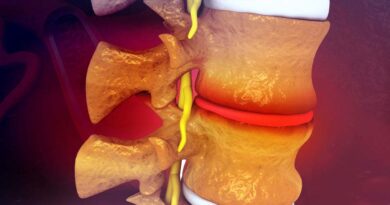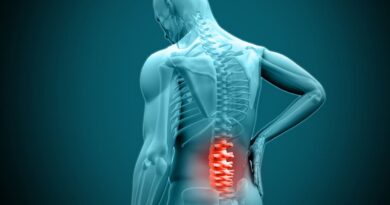7 tips to prevent back pain if you are a student.
The end of the course is approaching and many students increase the time they spend sitting, which is why it is common for parents at doctor’s appointments at this time of year worried because their child has back pain. To the fact that our children spend more time sitting, we add the bad posture caused by the use of mobile devices and screens, we have the perfect cocktail for pain to appear.
That is why we want to give you some small tips so that you can avoid your child’s pain during this time of year.
Table of Contents
How to prevent back pain in students or teleworkers?
Maintain good posture
One of the most important things you can do to prevent back pain is to maintain good posture. When you are, keep your feet flat on the floor and your knees bent at right angles. Make sure your hips are slightly higher than your knees. Try to avoid sitting in a hunched position for long periods of time, as this can cause back pain.
Use a suitable chair
When you study, it is important that you use a suitable chair that provides you with the support you need. Choosing a suitable chair is essential to prevent back pain.
Here are some features an ergonomic chair should have to reduce back pain:
- Adjustable backrest: The chair should have an adjustable backrest so that you can adjust it to the natural curve of your back. It should also have lumbar support to keep your spine in a neutral position. The backrest must be high and support the entire spine. If your backrest is not designed to maintain lumbar lordosis, you can use a cushion in the lower back area.
- Adjustable Height: The chair should be height adjustable so that you can adjust it to the height of your desk or table. This will allow you to maintain correct posture while you study.
- Armrests: The chair should have adjustable armrests so that you can adjust them to the correct height. The armrests will allow you to rest your arms and shoulders.
- Chair material: The chair material should be comfortable and breathable to avoid excessive sweat and discomfort. Leather, mesh, and fabric are common materials used in ergonomic chairs.
- Stability: The chair should have a stable base with sturdy wheels to prevent it from tipping over or moving around too much when you move. It should also have a locking mechanism to keep the chair in place while you study.
- Seat depth: The chair should have a deep enough seat so that you can sit comfortably and rest your back against the backrest. The seat depth should also be adjustable to accommodate different heights and leg lengths.
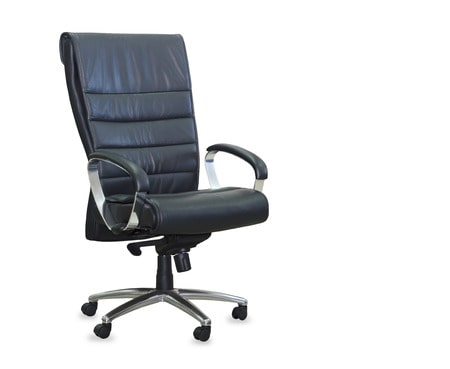
Remember that everyone has different ergonomic needs, so it’s important to try different chairs before choosing one to make sure it suits your individual needs.
Get up and move regularly
It’s important to get up and move regularly while studying to avoid stiffness and back pain. Try to take short breaks to walk or stretch every half hour or hour. These short breaks can help relieve tension and improve blood circulation. There are scientific studies that report a decrease in back pain for every hour that a worker reduces sitting.
Do stretches
Stretching exercises are a great way to prevent back pain. Do some stretching exercises before and after studying to prepare your muscles and relieve tension. Stretching exercises can help you maintain proper posture and improve the flexibility of your muscles. We propose a series of very simple exercises that you can do in your room.
- Neck stretch: Sit with your back straight and shoulders relaxed. Then, gently tilt your head to one side, holding the position for a few seconds. Repeat in the other side.
- Shoulder stretch: Sit with your back straight and shoulders relaxed. Then, raise your shoulders towards your ears and hold them there for a few seconds before relaxing them.
- Spinal stretch: Sit with your back straight and your hands resting on your knees. Then, gently rotate your spine to one side, holding the position for a few seconds before returning to center. Repeat in the other side.
- Hip stretch: Sit on the edge of a chair and place your right ankle on top of your left knee. Then, gently press down on your right knee to feel a stretch in your right hip. Hold the position for a few seconds before changing sides.
- Hamstring Stretch: Sit on the edge of a chair and extend your right leg outward. Then, lean forward from the waist, keeping your back straight, to feel a stretch in the back of your right leg. Hold the position for a few seconds before changing sides.
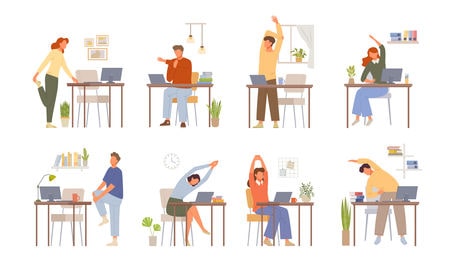
Remember that these exercises and stretches are only a guide and should be adapted to your individual needs. Perform the exercises and stretches gently and without pain. If you want more information about exercises and stretches you can visit the website of the Society of Physical Medicine and Rehabilitation
Use a suitable desk
It is important that you use a suitable desk to study. The desk should be at the correct height so that you can maintain a comfortable and upright posture. Make sure the desk surface is large enough so you can work comfortably without having to slouch.
Lately, elevating tables have appeared that allow you to work in different positions. These tables have advantages over traditional tables to prevent back pain
- Reduce back strain: If you sit for long hours, you may experience back strain and fatigue. A lift table allows you to work standing occasionally, which reduces pressure on your back and helps prevent back pain.
- They improve posture: If you use a lifting table, it is easier to maintain good posture since the spine remains more upright. This reduces stress on your back and helps prevent back pain.
- Promote blood circulation: If you sit for long hours, you may experience poor blood circulation in your legs. A lift table allows you to work standing from time to time, which improves blood circulation in your legs and reduces fatigue.
- Increase productivity: Standing while working can increase energy and concentration, which in turn increases productivity.
- If you use a small footrest to alternate the supporting leg while standing, it will help you relax your lumbar muscles.
Overall, lift tables are a useful tool for preventing back pain and improving posture. If you use a lift table, make sure to adjust it correctly so that your posture is ergonomic and comfortable.
Correct posture at the desk
Nowadays, a student who does not need a computer is not conceivable. However, it is important that you take into account some considerations to maintain the most appropriate posture and thus prevent the appearance of back and neck pain.
- Place the computer screen at the right height: The computer screen should be at eye level so that you don’t have to tilt your head up or down. If the screen is too low, you can use a stand or stand to raise it.
- Adjust the distance between your eyes and the screen: Keep the screen about an arm’s length away to avoid eye strain and neck strain.
- Adjust your keyboard and mouse to the right height: Make sure your keyboard and mouse are at the right height to avoid strain on your arms and shoulders.
If you experience pain or discomfort, consult a health professional for specific recommendations for your case.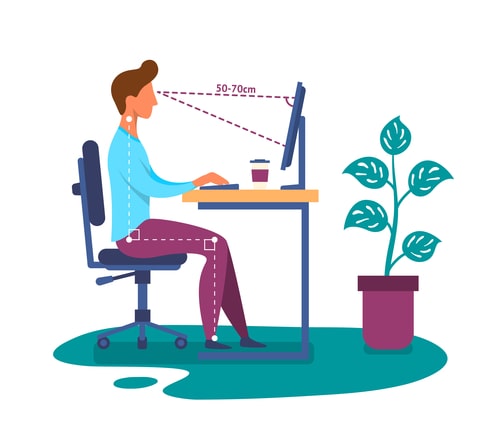
Use a footrest for added comfort
Footrests are a useful accessory to prevent back pain, especially if you spend a lot of time sitting in a chair.
- They improve posture : Footrests elevate your feet and allow you to sit in a more upright position, which helps maintain good posture and reduces strain on your back.
- Reduce pressure on the thighs : Footrests reduce pressure on the thighs, which in turn reduces pressure on the lumbar area of the back.
- They promote blood circulation : If your feet are not properly supported on the floor, you may experience poor blood circulation in your legs. A raised footrest helps improve blood circulation in the legs, which in turn reduces pain and fatigue.
- They reduce tension in the back muscles : When the feet are elevated, the back muscles relax and tension points are reduced, which in turn reduces pain and fatigue in the back.
And remember, if despite these tips the pain persists when you remain seated, you should go to a specialist to rule out that you do not have a back injury that requires treatment.


